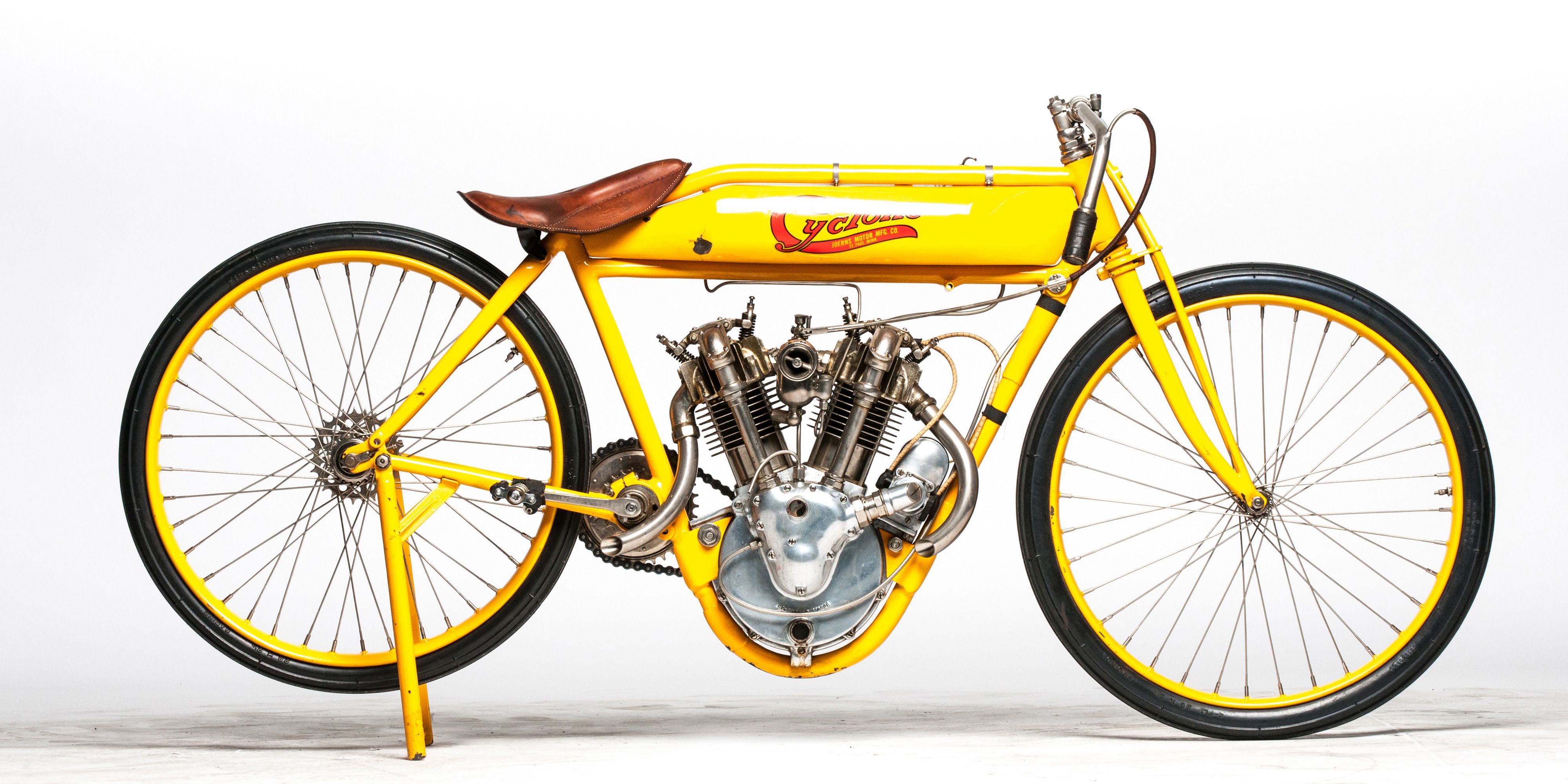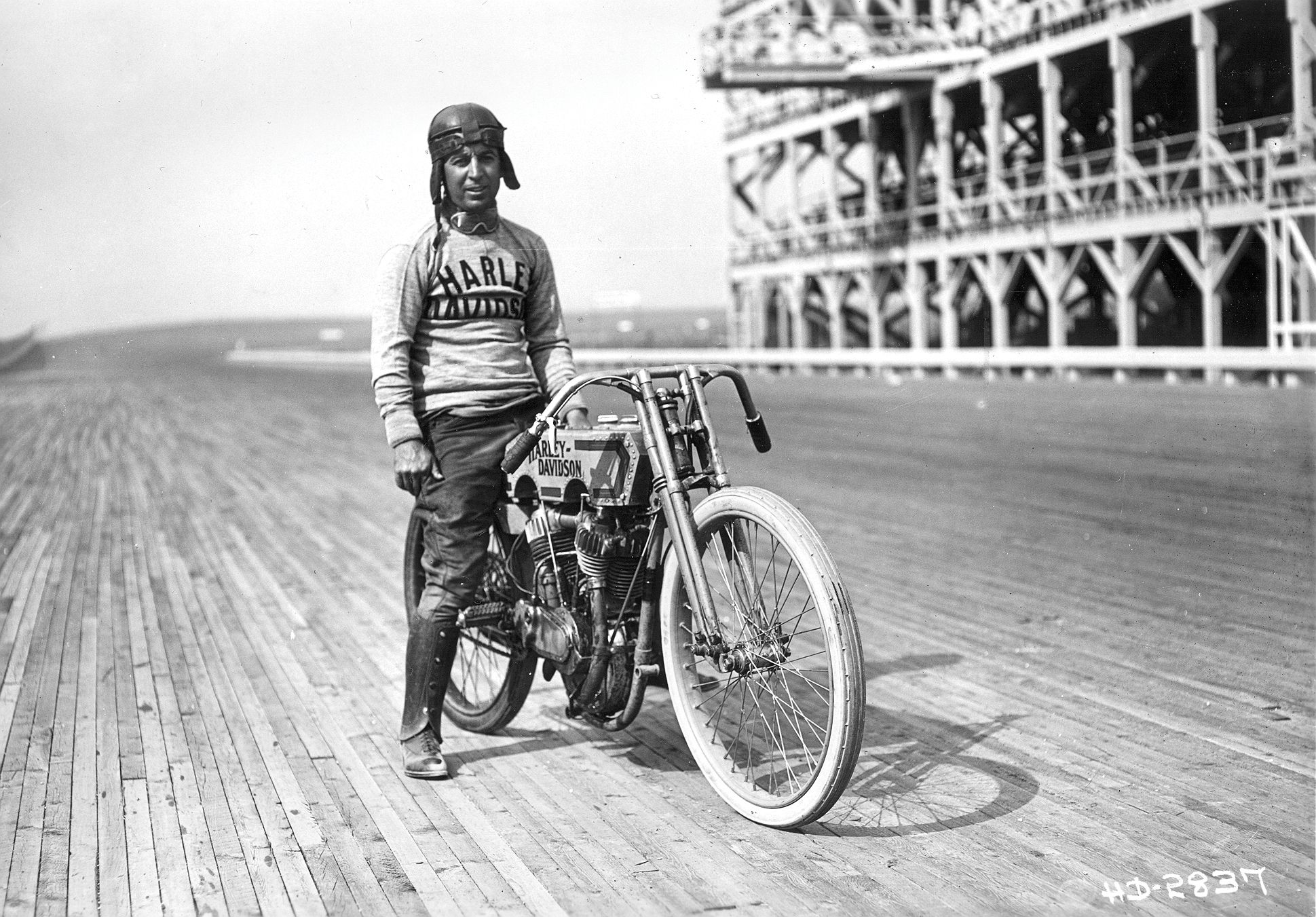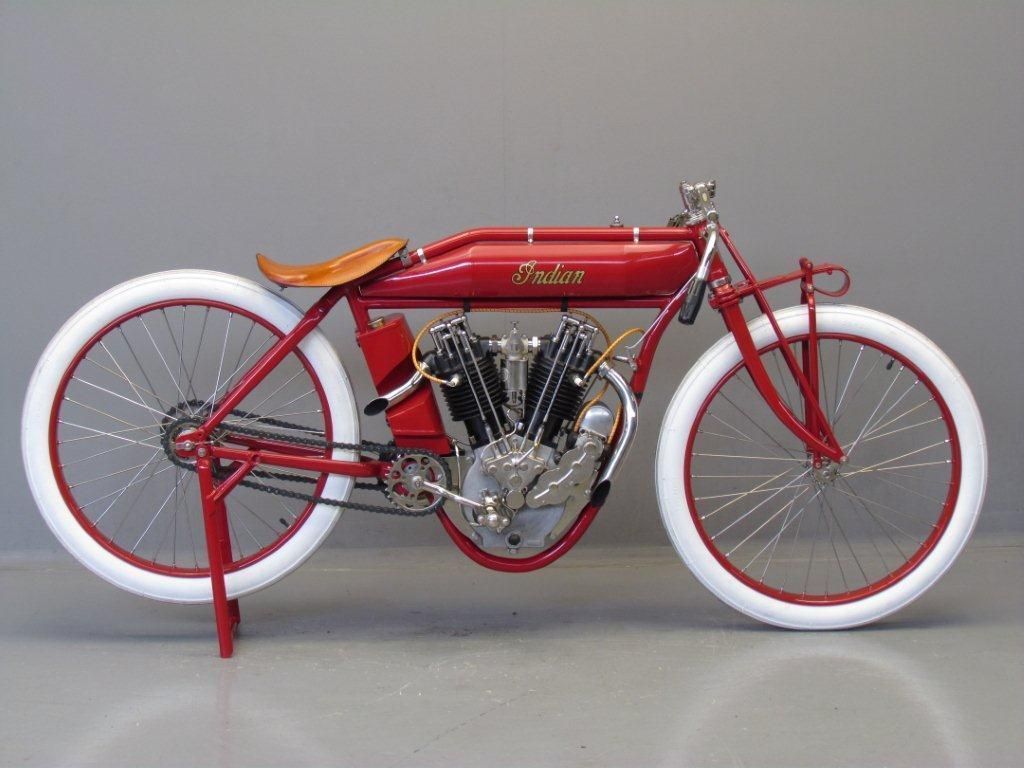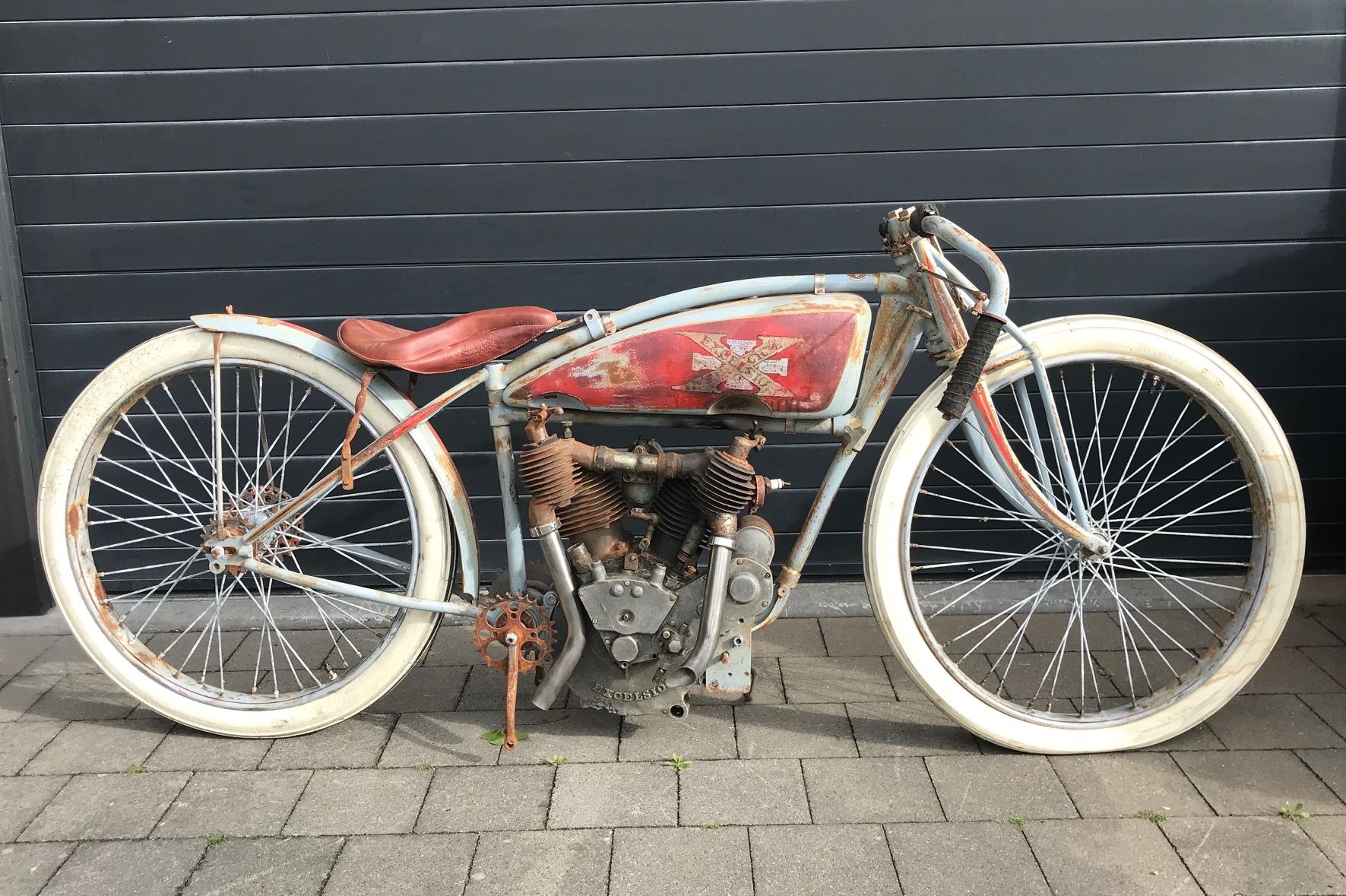Between 1910 and 1930, board track racing was hugely popular in the U.S. However, the risks were enormous and the tracks soon became known as the Murderdomes!
Board Track Racing at the Murderdomes!
In 1910, the nascent motorcycle industry turned to competition to not only improve their products but to publicise them to the ever-growing motorcycling community.
Racing on banked wooden board tracks was especially popular, although other races were held on the bricks of Indianapolis or on dirt tracks. The wooden Motordromes were cheap to build and, in all, around 24 were built in the period. They needed a lot of maintenance, however, and some were out of action in only three years.
Banking angles could be anything up to 50°, although most were around 40° and speeds were often near 100mph. The bikes were simple and crude, with total loss lubrication for the engine, skinny tyres and the bare minimum of anything else: they were literally en engine and a pair of wheels held together by a skimpy frame.
The Great Depression put an end to board track racing almost overnight. Of 24 tracks in 1929, only four were left two years later and, by 1932, there were no more races held on board tracks.
Racing on the board tracks was a perilous sport. Wearing leather trousers was one thing but the woollen jumpers worn on top did nothing to prevent splinters lacerating the bodies of tumbling riders. Deaths were so frequent that the Motordomes were nicknamed Murderdomes. It didn't stop the riders, however: death or glory, indeed.
This lovely short film tells the story of board track racing between 1910 and 1931. It's well worth a watch.





